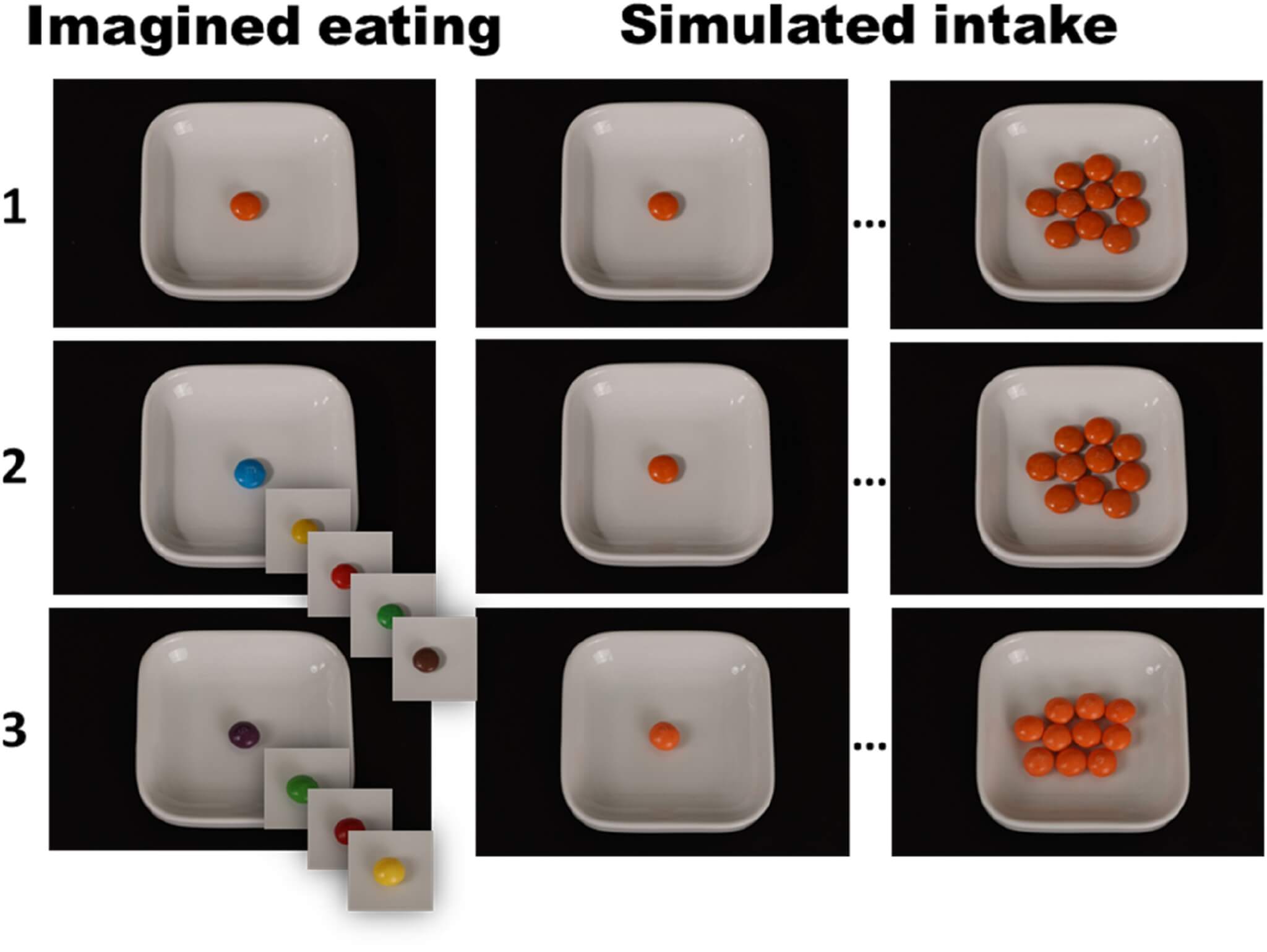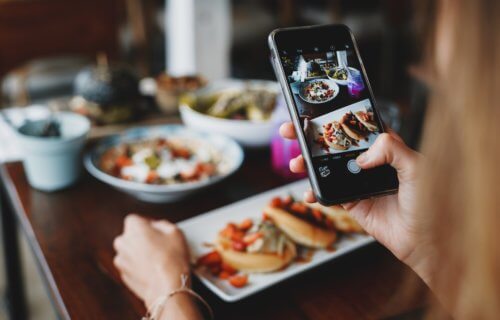AARHUS, Denmark — Trying to lose weight? Just browsing the internet may be a great way to start. Viewing images of food online can increase feelings of fullness, a finding that could potentially aid in treating overeating, a new study shows. Researchers speculate that an app could be developed to display images of the food a user is craving, potentially curbing overconsumption.
Experiments demonstrated that viewing the same image of food over 30 times can reduce feelings of hunger.
“In our experiments, we showed participants the same food picture 30 times, which made them feel more satiated than before they viewed the picture,” explains study author Tjark Andersen, a food science Ph.D. student at Aarhus University in Denmark, in a media release. “Those shown the picture multiple times also chose a smaller portion size than those who only viewed it three times.”
The team further investigated how many repetitions were necessary and whether variation in images altered the sense of satisfaction.
“Previous studies have shown that images of different food types don’t affect satiety in the same way. That’s why one can feel full after the main course but still have room for dessert. Sweet things represent a different food category,” Andersen adds.
The researchers conducted several online experiments, with over 1,000 people participating. Initially, they displayed an image of orange M&Ms, showing it three times to some participants and 30 times to others. Those who saw the image more frequently reported feeling more satisfied.
Scroll down to see the top 4 diets most recommended by experts

They then repeated the experiment with images of M&Ms in various colors, and again with Skittles, which have distinct flavors according to color. In both cases, the result was consistent regardless of color or flavor. This suggests that parameters beyond color and flavor must change to influence satiety — the feeling of being full.
Given the tripling of the global overweight population since 1975 and the World Health Organization’s classification of obesity as a significant health challenge, these findings could be critical. Overconsumption of unhealthy food and lack of exercise are major contributing factors to this trend, and the study’s results could potentially offer a novel approach to appetite control.
“Imagine developing an app based on a Google search. Say you’re craving pizza. You open the app, select pizza, and it displays numerous photos of pizza while you visualize eating it. This could provide a sense of fullness and perhaps eliminate the pizza craving,” Andersen speculates.
However, the study’s impact on calorie consumption is relatively modest: participants selected slightly fewer Skittles or M&Ms, reducing caloric intake by less than 50 calories.
“Unless you entirely skip a meal, the calorie savings will be minimal. But perhaps this method can be employed for that purpose. It would be interesting to explore,” adds Andersen.
As the influence of food advertisements on social media continues to be researched, there is a growing understanding of our constant exposure to appealing food images. A previous study attempted to quantify the average number of food advertisements seen while scrolling on social media. Participants, on average, encountered just over six food-related posts in a 12-hour period, the majority of which were images of food, with over a third about desserts or other sweet foods.
While the internet and social media can contribute to rising rates of overweight and obesity, these platforms might also offer a solution.
The study is published in the journal Appetite.
Top 4 Diets Most Recommended By Experts
For those that need a little more help curbing their appetite and losing weight, StudyFinds researched the best weight loss programs that will support your personal goals.
1. WW (WeightWatchers)
WW, formerly known as Weight Watchers, is the most recommended weight loss program. It works because you can easily integrate the program into your life. “You’ll be happy to hear that it caters to everyone’s lifestyle, meaning you don’t have to give up the foods you love most while watching the scale go down,” writes Eat This, Not That.
2. Noom
Referring to itself as “WeightWatchers for millennials,” Noom is an “app tracks your food, physical activity and helps you lose weight with no restrictive dieting,” according to CNET.
According to Women’s World, the Noom app “helps you lose weight by applying psychological principles of behavior (Cognitive Behavioral Therapy, or CBT, to be exact) that gently guide you to make different decisions about what, and how, you eat. Health coaches are there to support you 24/7, answering questions and providing encouragement.”
3. DASH diet
This diet “was initially developed to prevent and treat high blood pressure. Since then, it’s been proven to be effective in also lowering blood cholesterol, making it an ideal plan for individuals with heart disease, its risk factors or a family history of heart disease,” says Good Housekeeping.
A recent study ranked DASH as the best diet in terms of heart healthiness. Experts found that the 10 reviewed diets varied widely in their scores, ranging between 31 and 100, and grouped the diets into four tiers of heart healthiness. The DASH-style (Dietary Approaches to Stop Hypertension) diets, designed to treat or limit high blood pressure, obtained a perfect score in meeting all of the American Heart Association’s guidance.
4. Mediterranean Diet
“Inspired by the traditional eating patterns of southern Italy and Greece, the Mediterranean diet is deemed ‘the gold standard in preventive medicine,’ due to its ‘harmonic combination’ of antioxidants and anti-inflammatory properties, according to a review of studies,” writes Forbes. “Rich in fresh fruit, vegetables, legumes, whole grains and fish, this diet yields health benefits, including increased life expectancy, reduced risk of chronic disease and improved quality of life.”
You might also be interested in:
- Ozempic without Ozempic: These foods can calm your appetite just like weight loss drug
- Appetite genes control how quickly infants grow — may reveal obesity treatment
- Eating more nuts can lead to weight loss, better control of your appetite
South West News Service writer Alice Clifford contributed to this report.

